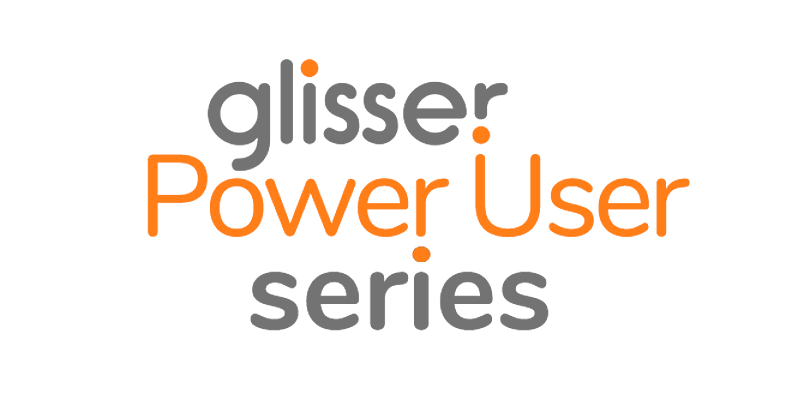I first worked on a virtual event back in 2012 - it was a simple 10 session event run over 5 days. Technically speaking, it was a series-linked group of webinars, so it was pretty basic stuff, even for 2012. That said, this was also a time when most business folk were on Blackberry for work comms and mobile optimised meant, well, absolutely nothing.
In retrospect (and somewhat horrifyingly,) this virtual event was an out and out shopping opportunity. It was for B2B buyers to see prospective software platforms in action. These buyers were so tired of receiving pseudo-online pitches that we decided to stop trying to put lipstick on these pigs and just bill them exactly for what they were. It’s safe to say that it wasn’t without risk, but we knew our market and knew we had a lot to gain if we got it right.
Do you know what? It flew. Its first year saw 8 sponsors paying very good money and almost 900 registrants. Not bad for way back then…
Fast forward to 2020 and I’ve since been involved in developing and launching approximately60 virtual events at various companies, both pre and since Covid slaughtered the real life event sector. These have been small events with 10 people fully engaged, right through to some with tens of thousands of attendees and mega-money sponsorship.
Without a doubt they all had very similar challenges: An infinite loop around engaging attendees, monetising and sponsorship, retention within the virtual environment that you’ve worked so hard to create, and then finally, getting decent analytics to demonstrate the ROI.
But I said this was about lessons learned from the other side of the virtual event front line… because now I work with Glisser – the virtual event platform all about audience engagement and already supporting hybrid events too.
I’ve learnt a brain-frying amount, at break-neck speed, as we all keep hurtling towards the end of a year that’s been an uncomfortable blend of heart-wrenching change and eye-opening opportunity for our exhausted and yet resilient industry.
So – here are the top three takeaways from the first few weeks, and the things that, if I could go back in time, I would tell to every company I worked with before they started working on their first virtual event…
- Your event goals HAVE to come first, not your platform choice. Set your goals first, and select your platform accordingly. You have to be firm with yourselves to do it this way round. Don’t ask ‘what does this platform do?’ and ‘how does this platform help me and my event goals?’
- Your platform only needs to deliver what your event goals require – it doesn’t need to have every bell and whistle that you’ve ever come across and indeed too many features and you’ll be left over awed, let alone your attendees and sponsors… it sounds so obvious, but so many people have their heads turned by things that they won’t ever need. With this in mind,force yourself and your team to decide what you need before you start shopping. I’ve seen many companies skip this step and it usually ends with poor platform selection.
- It’s not always feasible to select one virtual event platform to fulfil every event goal. Just like in a real life event, you might find that you need to change venues to host an evening reception or you might have moved a group of VIP attendees to a different networking room at a certain point of the event because it made it easier for you to achieve your event goals. The same is true of the virtual world, you can’t always achieve every event goal with a single platform, so you may need to investigate different platforms and combine them together – integration may initially feel unnecessary (and quite possibly overwhelming), but research thoroughly so that you can make a fully informed decision.
- Think of your platform as your venue – just as you would have done at a real life event. You’d have learnt that venue inside out before making your plans: studied the layout, how people would flow around the space, where pinch points might be, where the fire exits were and how you were going to organise everything to help you realise your event goals.
- In this same theme, you’d have rented the venue space and then you’d have delivered your event within it. You’d have been responsible for telling speakers where to go, helping sponsors get set up, and actually running your event during the live event – starting sessions, fielding Q&A, putting up signage and notifying attendees of certain things at certain times. You are always best placed to do this, even in the virtual event world as you know your event 100 times better than your platform provider ever could – so before you ask them to do this for you, consider the risk of somebody who doesn’t understand your programme and your event being in charge of running it all.
- Streaming – and this is a big one – streaming and broadcasting seems to fox most event organisers to start with. Principally: learn enough and only enough - you don’t need to know more than you need to know! Dedicate time to educating yourself to how it works and try and keep it simple in your own mind. I tend to visualise various plugs that need to be pushed into the right sockets to ultimately turn the lights on. It can be baffling at first, but when you take the time to break it down, it’s not as complicated as it first appears – so cut yourself some slack and take the time to work it out.
- The power of video production! A quality video production and streaming company will drastically increase your event look and feel (think 5* hotel venue over 3*). More recently I have even heard of certain mega-consulting houses only considering sponsorship of virtual and hybrid events if video production is involved. And on that note… don’t even consider doing a hybrid event without video production, it’s an essential item to budget for as we move into hybrid events. Which leads me on to…
- Hybrid events! At the moment we are still more comfortable with the Hybrid-Light mode – by which I mean presenters in the room together, often with some presenters streamed in virtually, and attendees and viewers still remote. However, we are already seeing some incredible footage of superbly managed hybrid events with a decent number of in-room attendees too. The #1 most important thing that you need for a hybrid event is live slide sharing, which means those in the room and those remotely are seeing exactly the same slides at the same time controlled by the same person. It will finally be time so say goodbye to that overused phrase “I’m just going to share my screen… can you see it?” Make sure your slides are embedded in one central platform for a seamless viewer experience.
- Last but perhaps most importantly… service. I don’t think event planners, or the platforms anticipated how much service support would be required as virtual event complexity increases. Check to make sure your platform provider can deliver the service level you need and, as an event organiser at heart, I would rather over budget for this than under budget and end up with a disappointing event experience. Plan it around your existing event support and ensure your platform provider has your event goals front and centre too.
I could keep going, but this is definitely enough for now. Event goals and service levels… I think I will just reiterate those two to make sure they continue swirling around your mind.
If you think there are other vital lessons learned, please email them over – contact details below.
My next post will be on hybrid events: ‘Why does hybrid leave us so divided?’ – stay tuned!
Vanessa is an established virtual and hybrid event professional experienced in building engaged digital communities and delivering high-quality digital content and training.
Having run her first virtual event in 2012, Vanessa has been immersed in and witnessed the scope, landscape and potential of events, training and digital content evolve. Now, as an essential part of today’s business world; she has made it her mission to facilitate event organisers, training companies and digital content providers to navigate the rapidly evolving world of virtual opportunities.
In her role as Chief Evangelist at Glisser, Vanessa is demystifying the tech that can help trainers and event organisers breathe fresh life into their work.






